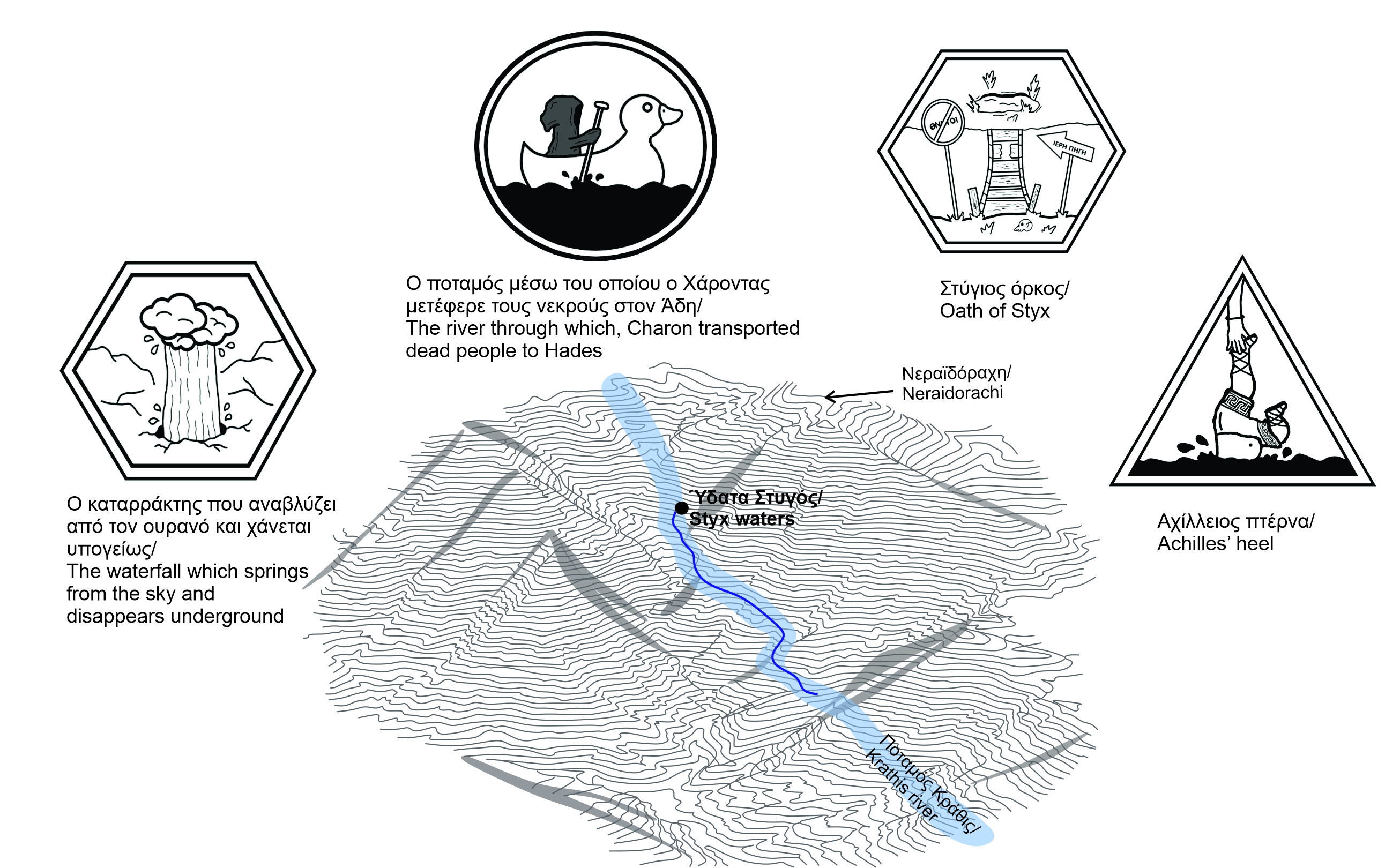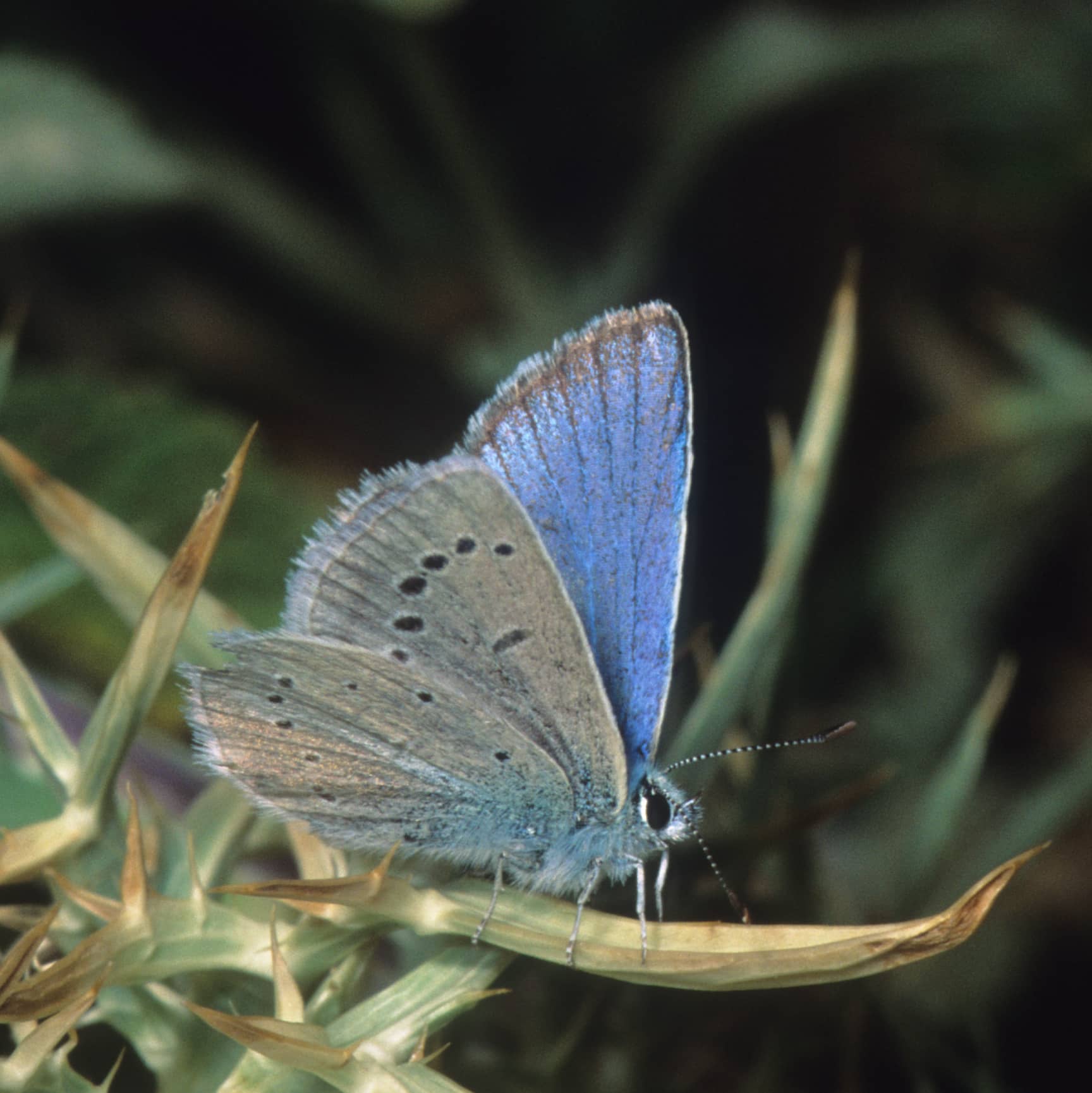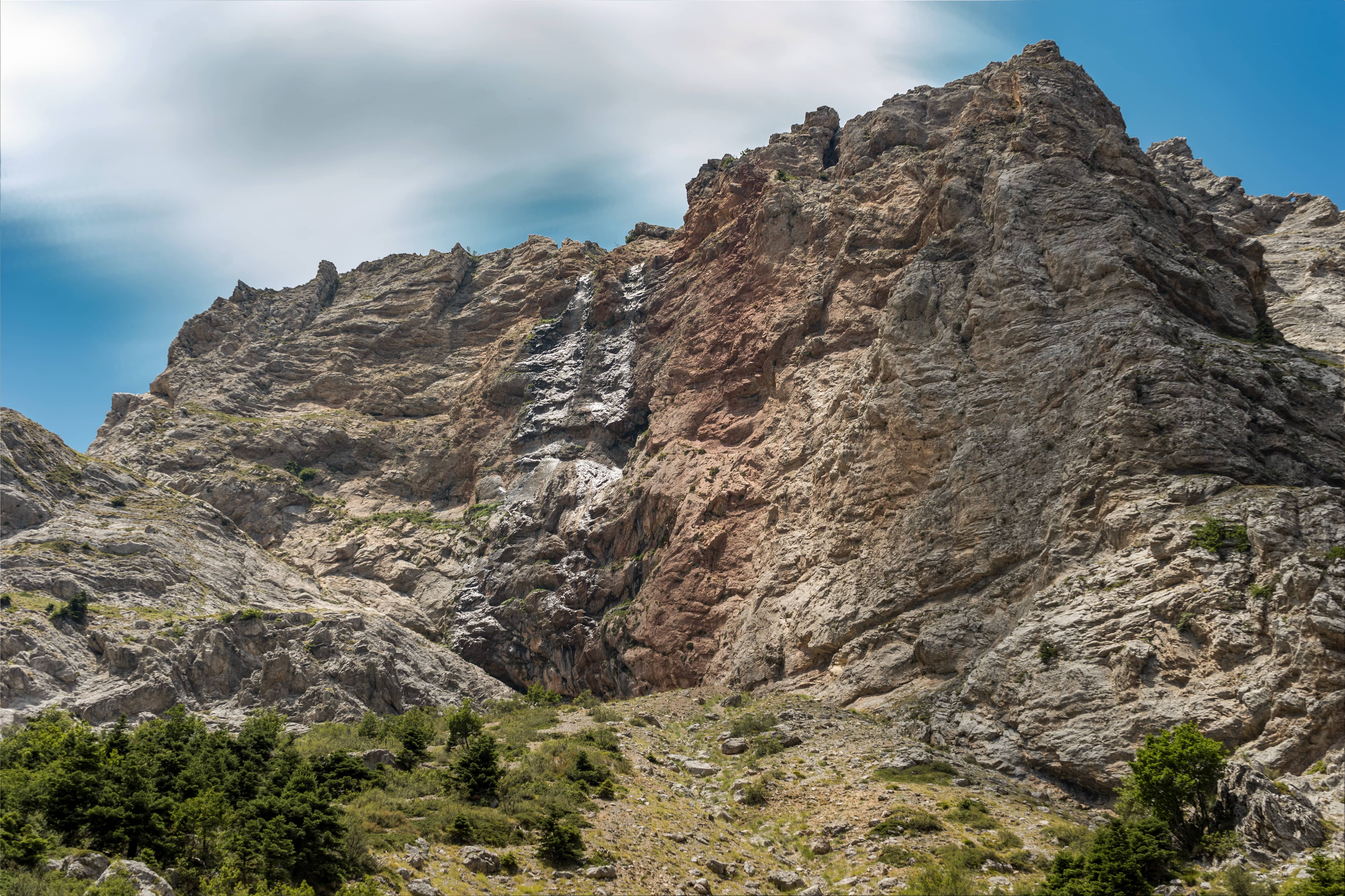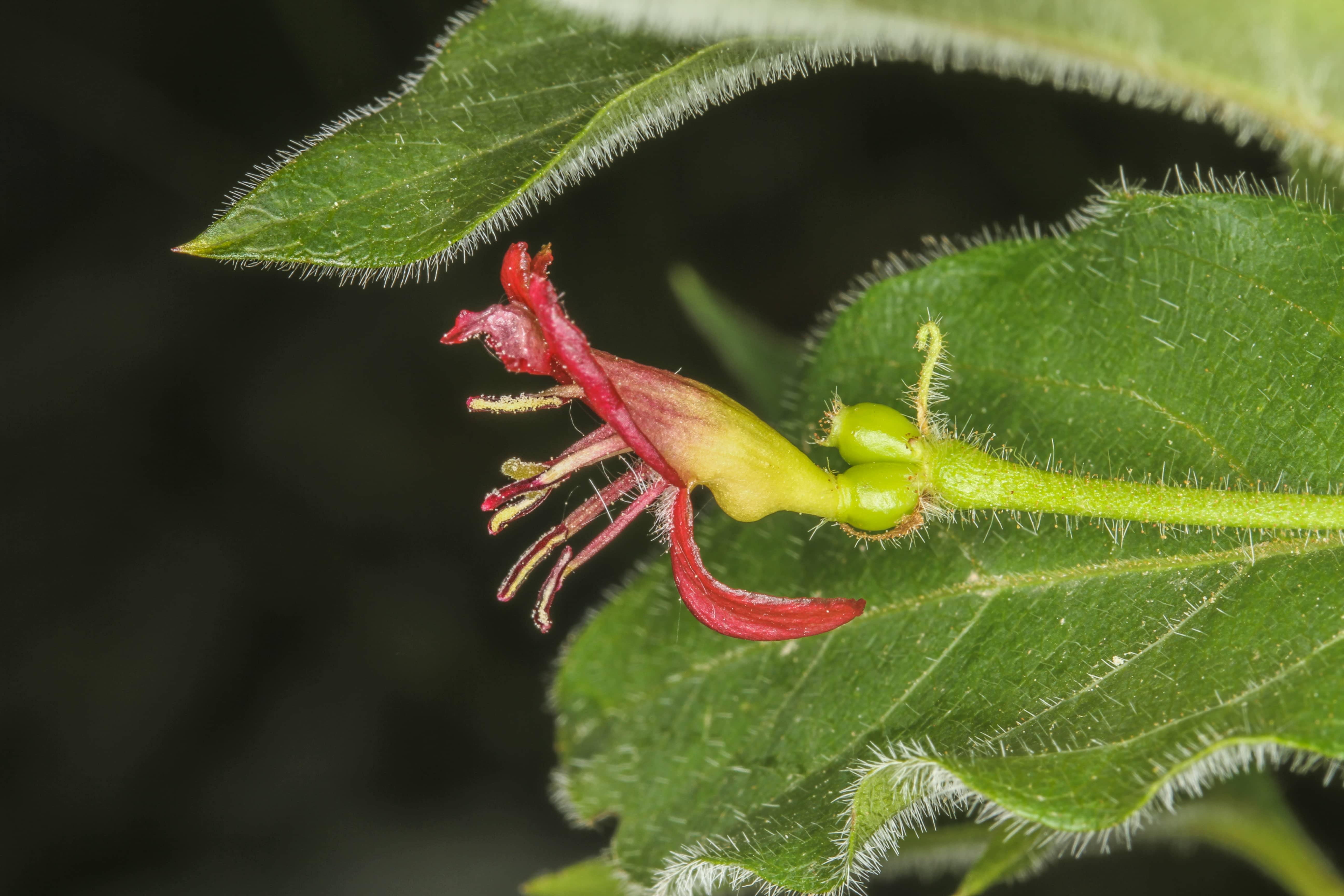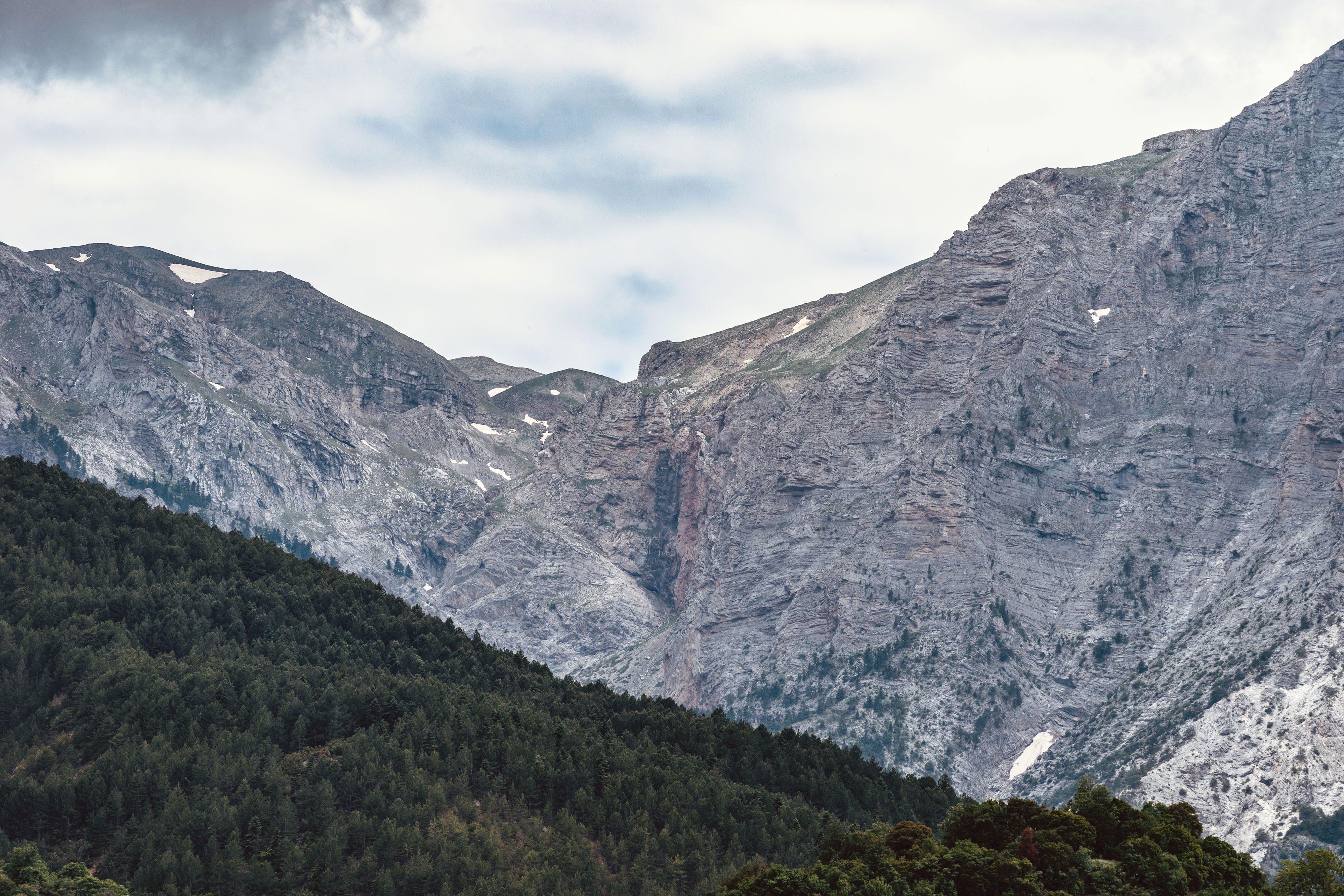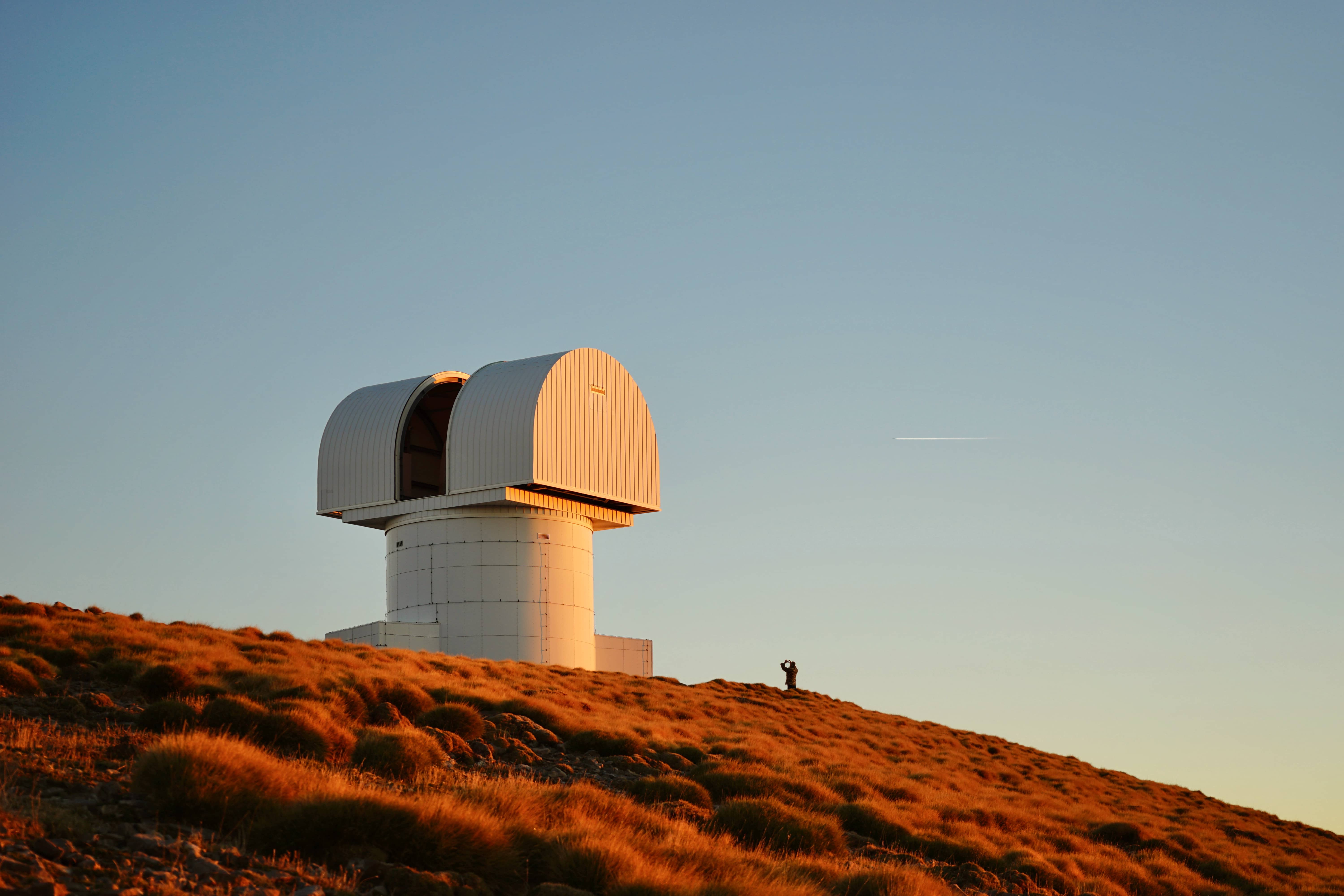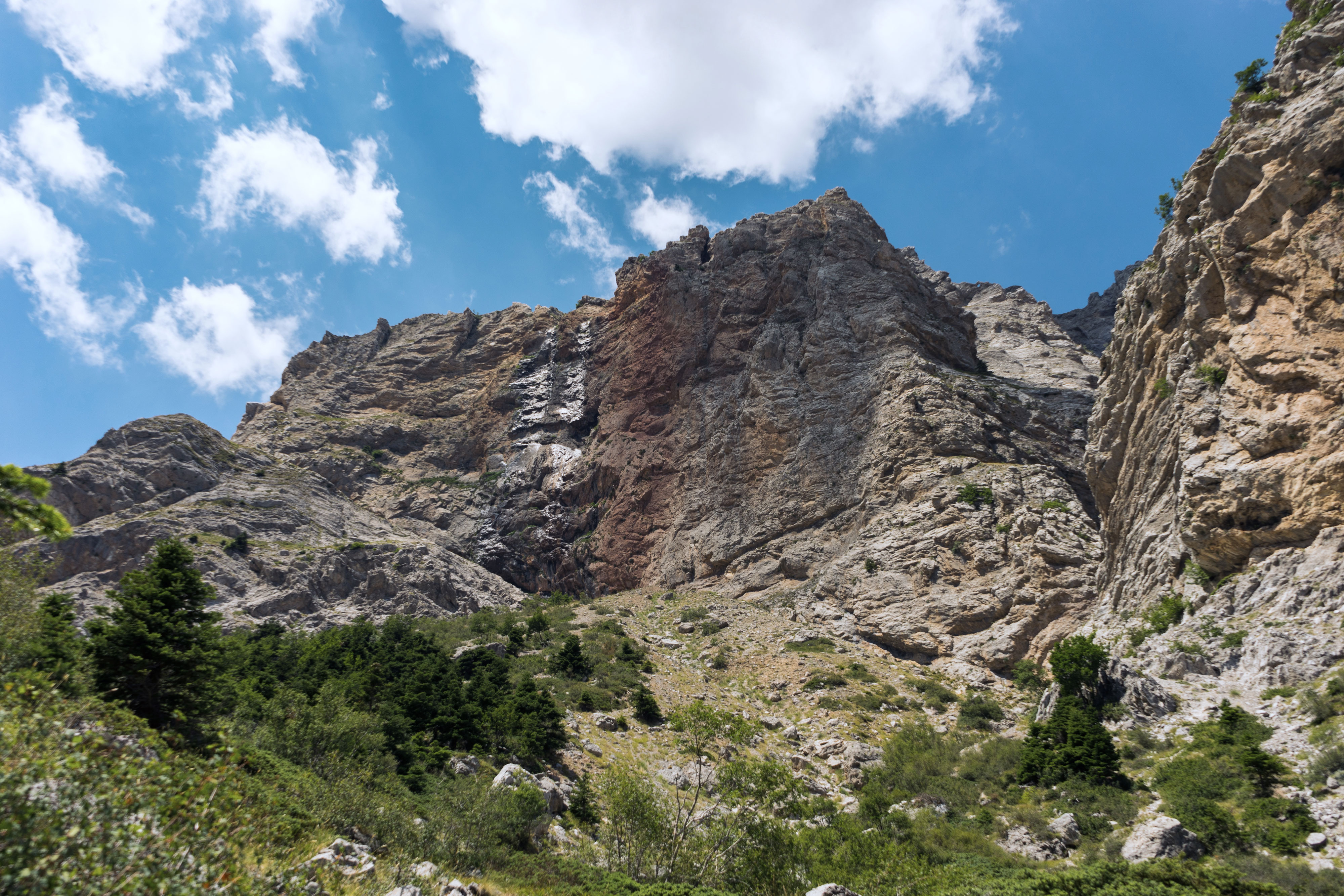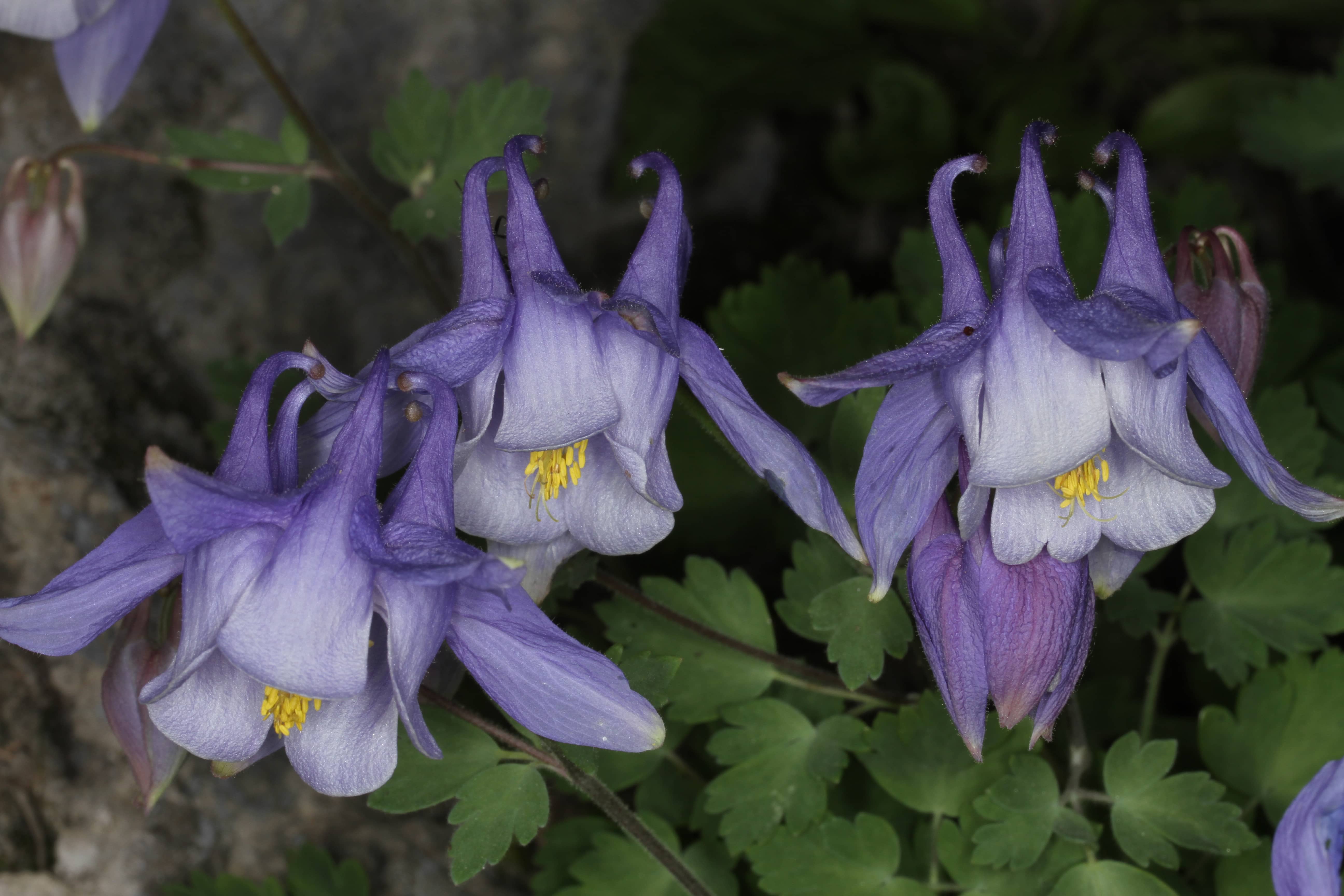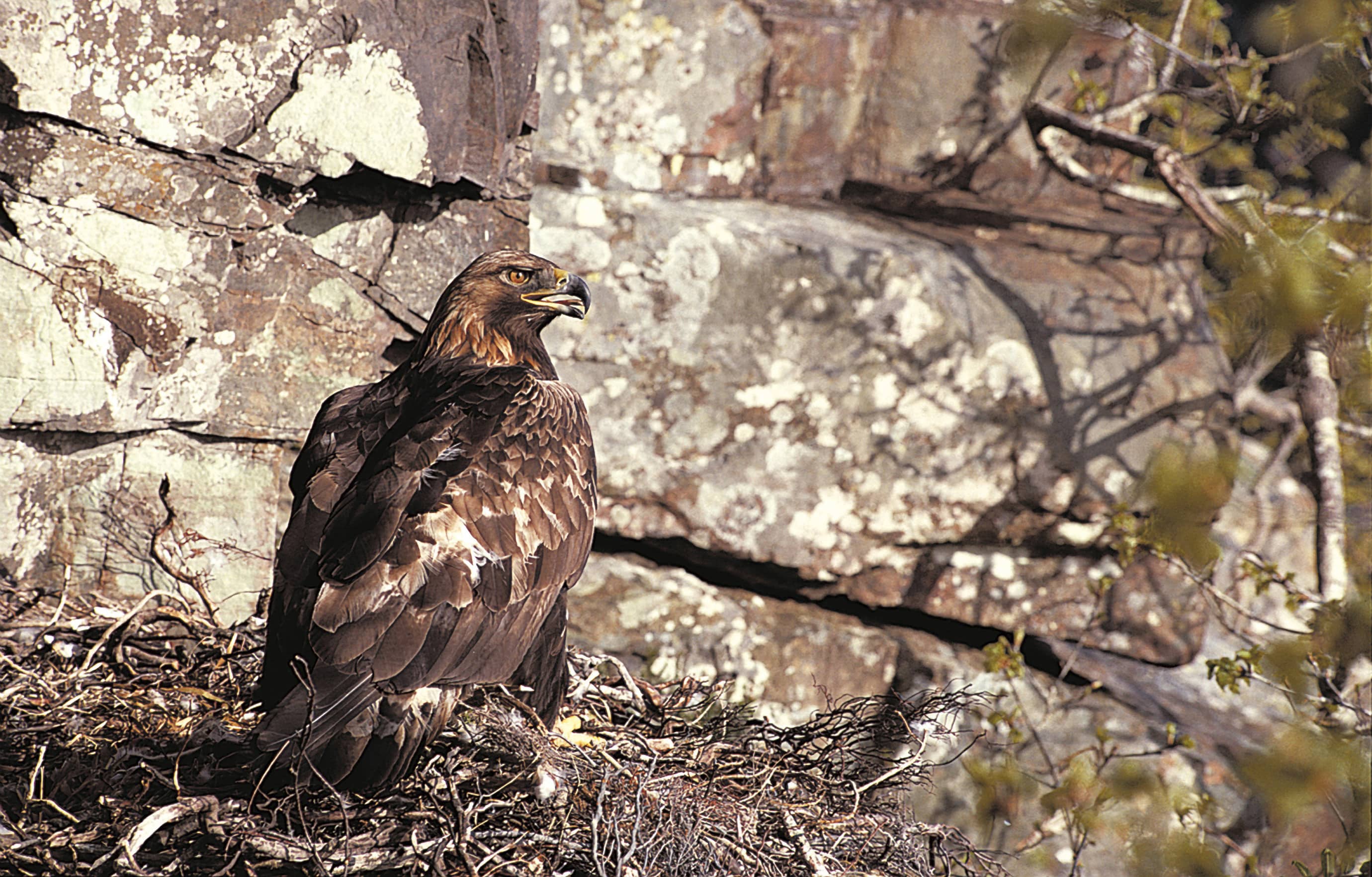THE MYTHICAL WATERFALL
Styx Waters runs through an imposing gorge whose depth is estimated to 1 km, at a distance of 600 m SE from this point. Many myths are connected to this geosite. The most famous of the myths is “Achilles’ heel”. Αt an altitude of 2340 m, at Neraidorachi peak, the Aristarchos Telescope is found, run by the National Observatory of Athens. The location was chosen because it is among the places in Europe with the lowest light pollution and the telescope usually stands above the clouds.
Geodiversity
The Styx Waters are the spring of Krathis river, coming out from a crack in the rock at an altitude of 2000m and falling rapidly forming a waterfall for almost 200 m. At the base of the waterfall a small rock shelter is found. The water from the waterfall, flows into the gorge. Along the course of the water through the gorge, small natural waterfalls are formed.
This impressive karstic system owes its formation to the lithology of the area which consists mainly of limestones, and more specifically of thick-bedded Jurassic (201.3- 152.1 myr) limestones, of the Tripolis geotectonic unit. Carbon dioxide (CO2) from water interacts with soluble rocks such as the limestones causing them dissolution, widening openings in the bedrock, and thus creating these karstic geomorphs (springs, caves etc).
Biodiversity
The Geosite is located within the Protected Area “OROS CHELMOS KAI YDATA STYGOS” (GR2320002) of the Natura 2000 network. The area hosts 4 local endemic plant taxa of Chelmos (Alchemilla aroanica, Lonicera alpigena subsp. hellenica, Polygala subuniflora and Valeriana crinii subsp. crinii). Remarkable is also the presence of the species Globularia stygia and Viola delphinantha. Significant invertebrates with restricted distribution are recorded in the area, such as the Lepidoptera Turanana taygetica, Polyommatus iphigenia as well astheOrthoptera Oropodisma chelmosi and Parnassiana chelmos. The area is located within the Special Protection Area (SPA) for avifauna “OROS CHELMOS (AROANIA)-FARANGI VOURAIKOU KAI PERIOCHI KALAVRYTON” (GR2320013).

